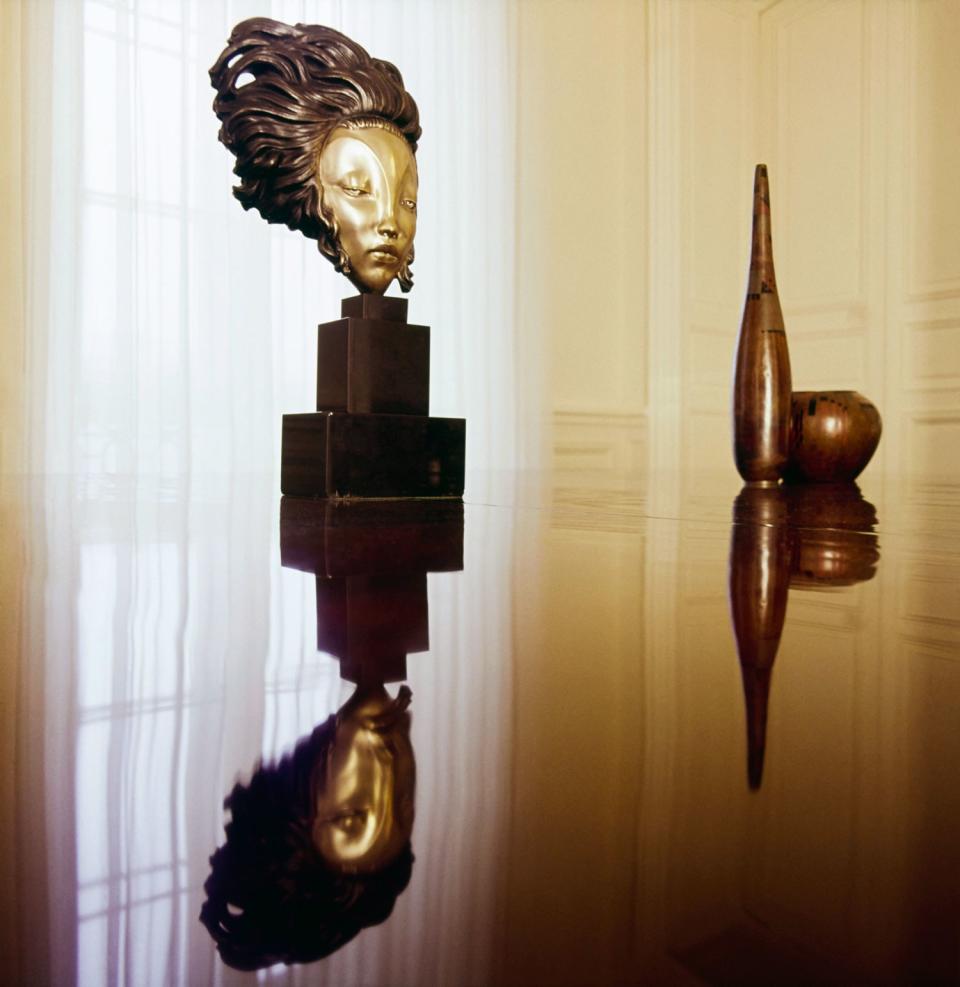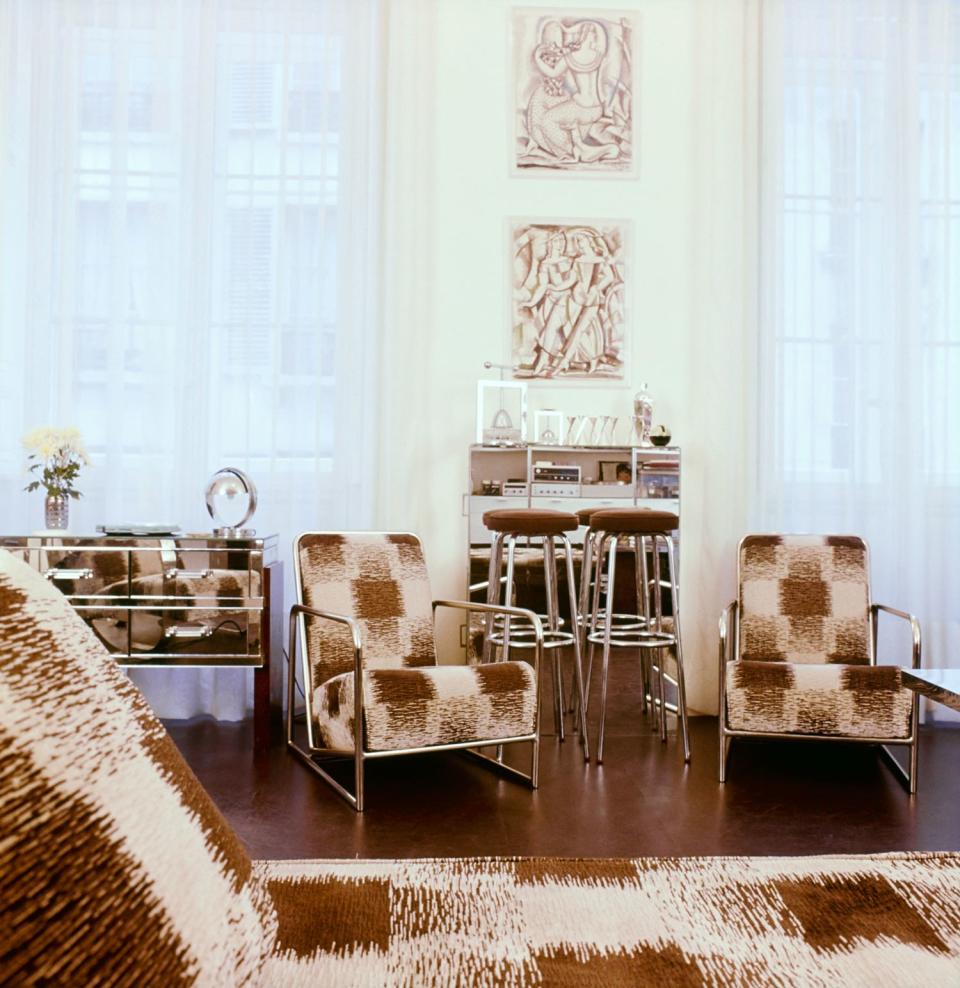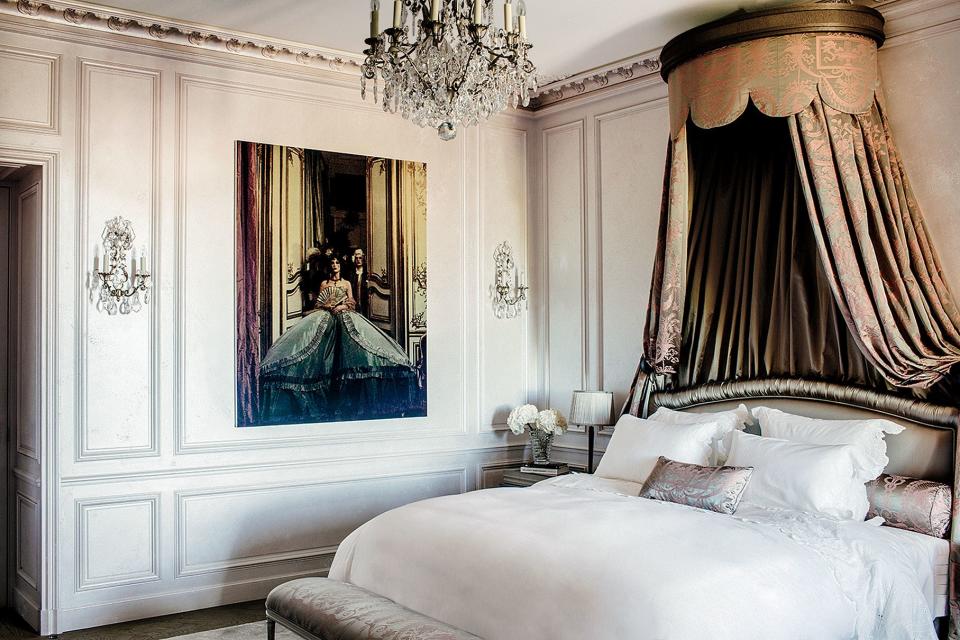Karl Lagerfeld Was an Omnivorous Collector and Decorator
Karl Lagerfeld, the creative director of Chanel who died today at the age of 85, was a Renaissance man. In addition to his day job churning out numerous collections a year for Chanel, Fendi, and his own eponymous label, he managed to forge a multitude of admired mini careers. He was a photographer, a publisher, a stylist, an illustrator, a gallerist, a director, a curator, a costume designer, and a conjurer of fine tableware and deluxe furnishings—his collection of marble lamps, tables, and more for Carpenter’s Workshop, created in collaboration with architect Aline Asmar d’Amman and inspired by Greek antiquity, made its debut in October. Lagerfeld was also an adventuresome collector and a thrilling decorator, largely for himself, embracing wide-ranging styles and modes for a variety of residences and then discarding them with impressive rapidity by a man who prided himself on his lack of sentimentality.
"I like to collect, but I'm not crazy to own things," Lagerfeld once told The New York Times. "I'm a fashion person. I'm excited by finding things, but in the end there's an accumulation and I want to get rid of it."

Decor from Karl Lagerfeld's Apartment in Paris, Vogue
In the 1970s, the 40-something fashion designer created his first grown-up apartment in an 18th-century building on Paris’s Place Saint-Sulpice, where he devised a black-and-white decor that recalled the slinky days of the 1920s with Jazz Age treasures such as Jean Dunand vases and Eugène Printz tables—which he sold at Sotheby’s Paris in 2003. Head-spinningly, he went through a fully immersive Memphis moment in the early 1980s, adopting the kooky provocations of the short-lived Italian design group for his penthouse in Monte Carlo, only to abandon most of it at Sotheby’s Monaco in 1991.
A collection of 18th-century French furniture and art—which had filled his 10,753-square-foot apartment at Hôtel Pozzo di Borgo, a 1707 Paris mansion at 51 rue de l'Université—went on the block in 2000, the 400-plus lots including a magnificent Louis XV gilt-wood fauteuil à la reine. Another collection of high-style French treasures, this time largely dating from the 1920s and 1930s—a Paul Follot carpet, an André Arbus and Vadim Androusov shagreen bed, and the like—was jettisoned in 2003.

Library-Workroom in Karl Lagerfeld's Apartment in Paris, Vogue
At one point, Lagerfeld craved Atelier Martine rarities, saluting the exoticism of the early 1900s and such designers as Paul Poiret and Paul Iribe. At his 1920s Villa Jako in Hamburg, Germany, the city where he was born, he luxuriated in an atmosphere of Weimar chic. There was a Rome apartment, too, a flat in Berlin, Château de Penhoet in Brittany, a villa called Elhorria in Biarritz, a 1740s French manoir called Le Mée (Lagerfeld sold it in 1998 to Princess Caroline of Monaco), the 1902 Villa Vigie in Monte Carlo, and, of all things, an 1850 Greek Revival house in Grand Isle, Vermont. Occasionally, Lagerfeld recorded his interiors and published the results: Some of the homes were used for his fashion shoots, while Villa Jako is the subject of Ein deutsches Haus (Steidl, 1997).

All this might seem an excess of real estate for one man whose only known companion of late was Choupette, a honey-color Birman cat with its own Instagram account. (That would be @choupettesdiary.) Perhaps. Though the domestically restless Lagerfeld may not have been sentimental, it’s easy to see that he was a romantic. As the energetic fashion star told Cathy Horyn of The New York Times a decade ago in a feature about his presto-chango settings, the reason for his house hunger was simple: "I can imagine all kinds of pasts that I have never known."
More from AD PRO: Has Instagram Made Design Shows Better?
Sign up for the AD PRO newsletter for all the design news you need to know

